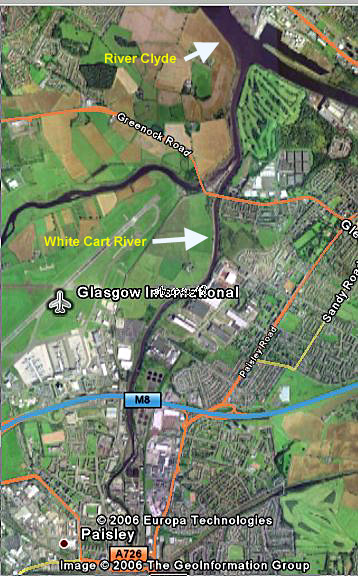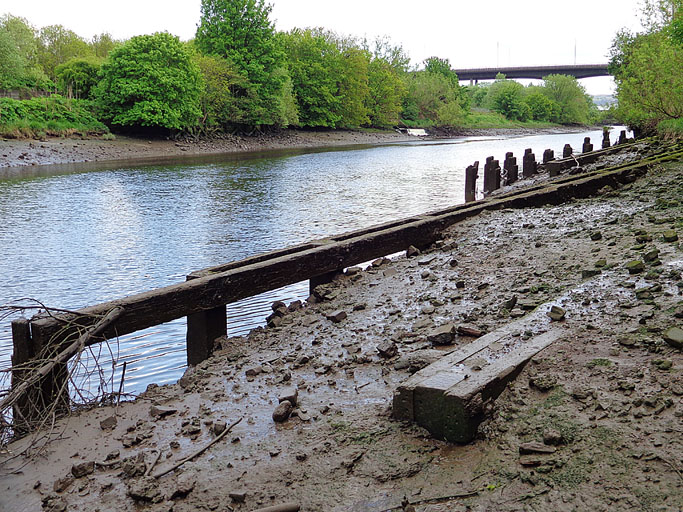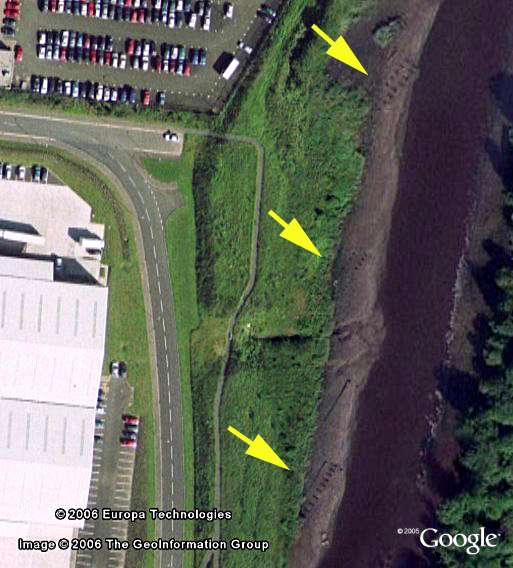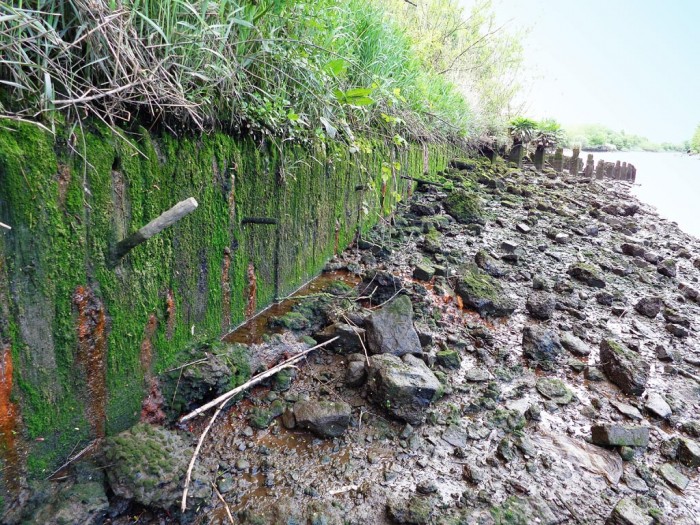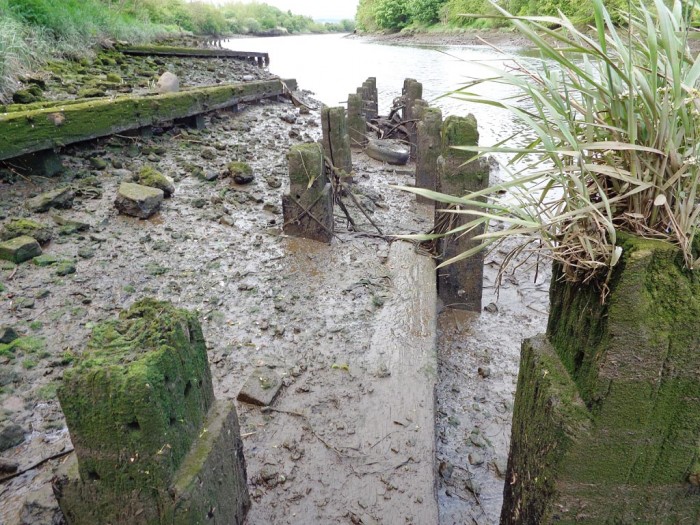Visit to Paisley by Jonathan Sutton
Written by Hette Mollema
The launch of a ship thundering down a slipway into her own environment is a momentous occasion, as anyone who has witnessed a launch can attest to. It is no less so for the shipyard and her future owners.
Jonathan Sutton’s visit to Paisley is the first time we know of, that anyone from the Sydney Heritage Fleet or the John Oxley team has visited the site where she was built. While we do know where the shipyard was, we do not know on which slip.
The John Oxley was built in 1927 by Bow, McLachlan & Co Limited at their Thistle Works in Abbotsinch on the White Cart, near the town of Paisley. The White Cart joins the Clyde River a few kilometres downstream from Glasgow. When Jonathan visited family in Glasgow in mid-2013, he took the opportunity to have a look where the John Oxley was built, as identified on Google Earth and on an old map from 1898. Today the area is largely taken over by Glasgow airport and ancillary industries.
Until about 1960, the area around the Clyde was a major shipbuilding centre. High costs and overseas competition has seen its demise with now only a remnant remaining for specialised vessels.
Like the Clyde, the White Cart has a tidal range in the order of 3 to 4 metres. What was once a busy shipyard is now overgrown with tangled shrubs and the exposed tidal flat is muddy and slippery. Despite having to trample through the bush and the mud, Jonathan managed to get some excellent photos of the site. It is surprising that there are still remnants of its past shipbuilding. The shipyard went into voluntary receivership in 1932.
Ships were typically built on an inclined slipway with the main structural support for the ship through blocks under the bar keel. Additional support blocks were placed near the bilge keel as the ship rose above the structural floors that adjoin the keel. The hull is constructed above the highest tide experienced in the waterway.
The slipways at the Thistle Works are all angled into the Cart and pointing downstream. The width of the waterway is too narrow to launch a ship in any other way.
Before her launch on Wednesday, 20th July 1927, the weight of the ship was transferred from the keel onto wooden side rails by means of wedges and sledgehammers, much like we have transferred the weight of the John Oxley a few times during the hull restoration. She was fitted with skids on the hull to slide on the side rails which were heavily greased with fat or soap. Cables and anchors were carefully set out to guide the ship once she floated in the stream to ensure she would not strand on the opposite bank. The launch took place at, or near, high tide.
Alan Blackwood, of the Riverside Museum Glasgow, has kindly obtained from the British Oceanographic Data Centre at Liverpool the tides for the 20th July 1927. High water in the afternoon on that day was at 16.45 hrs GMT or 17.45 hrs BST at Greenock, with a tidal height of 4.3m. The time correlates closely with an article in the Paisley and Daily Gazette which reported:” A steel single-screw steamer for the Government of Queensland was launched yesterday evening from the yard of Messrs Bow, M’Lachlan & Co., Ltd., Abbotsinch.” The launch took place during the summer in the Northern hemisphere, with Paisley being at 55 degrees and 50 minutes North and the sunset at 20.47 hrs GMT on that day. Daylight would have extended well into the evening.
From a platform near the bow, a bottle of champagne would have been smashed against the hull to wish her and all who sailed in her good luck. At the same time, a blocking wedge was removed by a worker of the yard with a sledgehammer. The ship slid gracefully, but thunderously, down the slip, stern first, to the sound of the yard’s whistles and a cheering crowd.
This is a tense moment. The heat from the friction of the skids on the runners creates smoke, steam and noise from the creaking timber. The momentum of the ship sliding down the slip is checked by cables, drag chains and anchors to slow the acceleration to avoid the hull bottoming out behind the launch wave. The slightest miscalculation in any aspect could bring disaster. The launch of a ship is the transformation from being a beached whale into its natural environment and is a moment of anxiety that everything goes to plan. In our case, it went off without a hitch. She would have floated high as there was not much more than a bare hull without any machinery, boilers or much superstructure.
John Oxley is the current major restoration project of the Sydney Heritage Fleet. The work is largely funded by sponsors, industry and a dedicated group of volunteers. Follow her progress on Home – SHF – John Oxley
*I am indebted to Jonathan Sutton and Alan Blackwood for their information and photos. Aerial images were taken from Google Earth.
An interesting footnote on Paisley adapted from a Google-Earth place marker:
It was during the Second World War that Paisley harbour was in big demand. In one month alone in 1940, 34 vessels used the harbour bringing in traditional cargoes of coal, cement, sand and stone and also oranges, ammonia and jam, the latter from South Africa and America.
During the War, all shipping down the Clyde, including Paisley, came under the umbrella of one authority – Clyde Anchorages. It is widely recognised that the principal reason for the importance of Paisley harbour during the War was the fact that, unlike the River Clyde, the area had been free from air attacks by the Germans, who were mercifully unaware that Paisley had such an important facility. The Germans were also not aware that local shipbuilders, Fleming and Ferguson, were turning out corvettes, frigates and landing craft at their Phoenix Works on the banks of the river. The ex Bow, McLachlan & Co Limited Thistle Works yard was briefly reopened to build landing craft.
Silting was always a problem with the Cart, along with relying on the tide, and by 1901 Paisley’s port aspirations were over. A 1960’s report revealed that £7,650 would have to be spent on dredging the harbour and navigation channel with a further £6,500 required to install aids for night navigation. While the council seemed prepared to meet these costs they soon voted to close the harbour when it was revealed the cost of securing the banks of the river would be more than £750,000, a vast sum of money in 1966. The decision infuriated local timber-merchants, William Lang in New Sneddon Street, who was still importing 500 tons of timber a month from Finland, Sweden, Czechoslovakia and Russia.
The river was abandoned in 1968.
